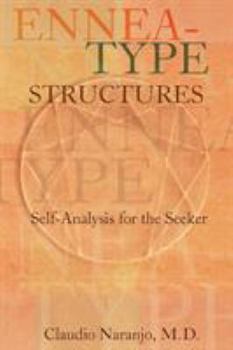Ennea-type Structures: Self-Analysis for the Seeker
Presents the main features of each ennea-type, character structures, and secondary personality traits. This description may be from another edition of this product.
Format:Paperback
Language:English
ISBN:0895560631
ISBN13:9780895560636
Release Date:April 1991
Publisher:Gateways Books & Tapes
Length:192 Pages
Weight:0.70 lbs.
Dimensions:0.5" x 6.0" x 9.1"
Customer Reviews
1 rating
Going Beyond "Sun-Sign" Ennea-Typing
Published by Thriftbooks.com User , 20 years ago
The use of the enneagram--that nine-faceted esoteric symbol--as a tool to map personality dynamics carries some interesting and surprisingly complicated cultural baggage. On the one hand, its extraordinary popularity shows the hunger many people have for some easily graspable method of self-understanding; indeed, not since the Sun Sign fad of the 1970s has there been such an iconic typology. On the other hand, the proliferation of popular books which, in their reliance on lists of adjectives and traits, seem to reduce--or encourage the reduction of--this characterology to superficial thumbnail sketches would appear to leave the seeker with very little essential sustenance indeed. After all, simply knowing that one is an ennea-type "Seven" or "Four" doesn't really carry any more depth of insight than knowing that one is an "Aries" or a "Virgo." The first virtue of this, Claudio Naranjo's seminal work on the ennea-types, is that he understands each type as a consellation of variable traits that have as their common axis a singular, perhaps archetypal trait and which, *as an essential flaw in perception,* transfers its skewed spin to the entire structure. Actually, in this he is not entirely alone among ennea-type authors. What makes Naranjo's book unique is that it isn't focused on the psychological level. The essential flaws aren't just neuroses or quirks of character but "ontic obscurations," fundamental (and deeply entrenched) misperceptions about the nature of one's being. The depth of this phenomenon is futher conveyed through Naranjo's aligning of the nine "fixations" with the seven deadly sins-adding fear and vanity. As Naranjo puts it:"The central idea underlying this book....is that we are looking for the key....to our ultimate fulfillment in the wrong place, and that this cognitive error is at the source of our dissatisfactions.... Throughout these pages I have called this key "being"....We may say that we are, but we don't have the experience of being; we don't *know* that we are. On the contrary, the closer the scrutiny to which we subject our experience, the more we discover, at its core, a sense of lack, an emptiness, insubstantiality, a lack of selfness or being."And from this perceived lack of being, Naranjo states, developes the entire structure which the book explores and elaborates on a type by type basis-never straying far from the fundamental connection of each type to "being loss."Another reason to recommend this book is the sheer concision, clarity and depth of the analyses. Naranjo has a way of homing in on the essential, and evoking the "flavor" of the character under discussion, partly through his own style, and partly by the judicious use of the apt metaphor, allegory (drawing frequently from the body of teaching tales involving the Sufi "Holy Fool" Mullah Nasruddin) and allusions to literature. Of course, some may find his style to be alternately terse and clinical. In addition, nothing here is sugar-coated, as





